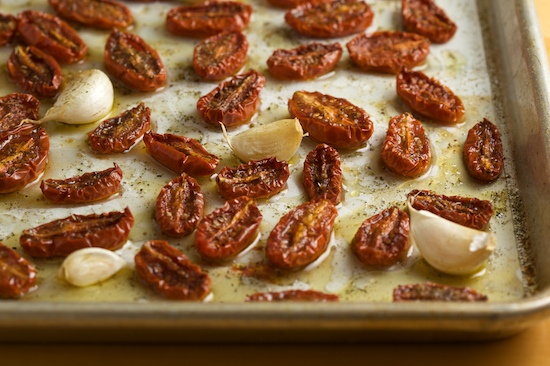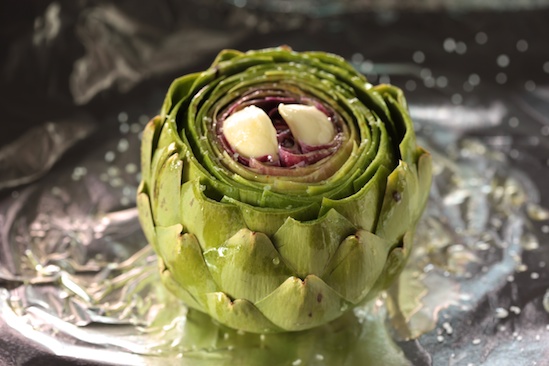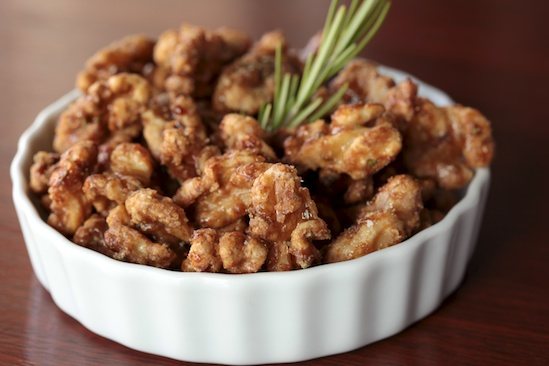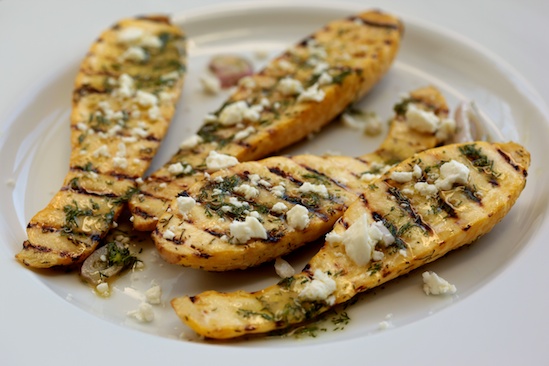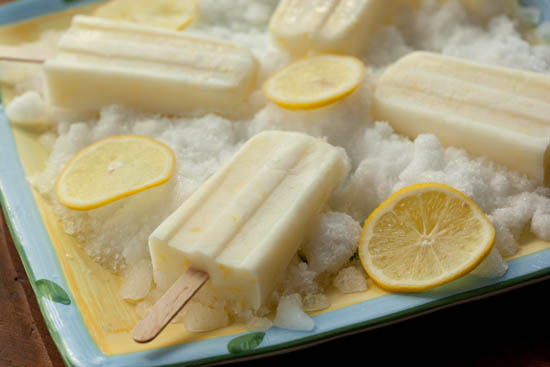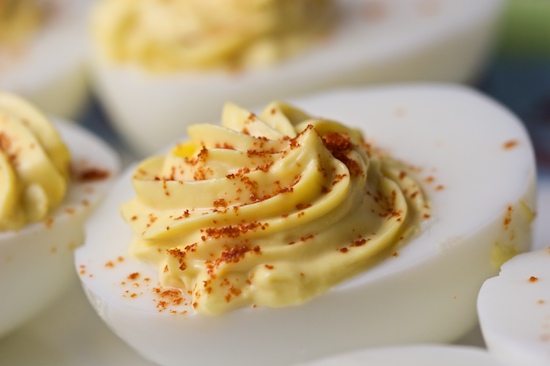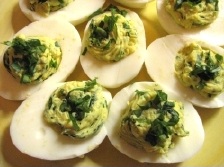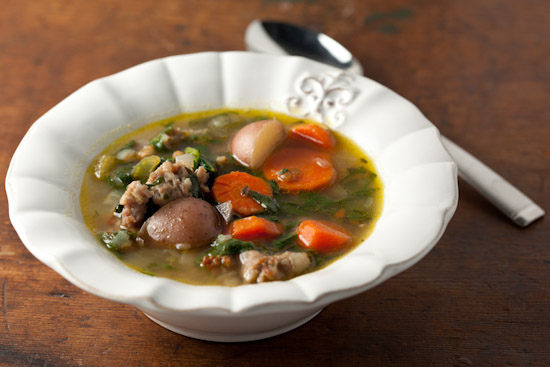|
Version 1:
—
6 1/2 oz. / 185g unsalted butter, melted and cooled slightly Special equipment: A madeleine baking pan, regular or small size 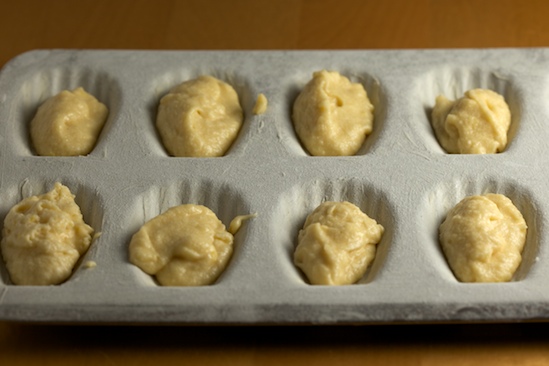 Combine the sugar, flour, baking powder and salt in a medium mixing bowl, stirring with a wooden spoon to blend. Add the zest. Stir in the eggs, mixing just to combine. You do not want to incorporate too much air into the batter. Finally, stir in the butter. Cover the bowl with plastic film and refrigerate for 1 hour, or until well chilled. The chilling is important, as it makes the batter easier to handle and ensures a higher rise during baking. At this point, the batter may be stored, covered and refrigerated, for up to 4 days. Preheat the oven to 400°F / 200°C / Gas mark 6. Butter and flour the madeleine moulds. Spoon the batter into the moulds, filling each mould 2/3 -3/4 full (using a spoon or small cup filled with batter). Bake the madeleines for about 7 minutes (about 11 minutes for larger cakes), or until the cakes spring back in the centre when lightly touched. modified from Bitten Blog / NY Times — 6 oz / 170 g unsalted butter (1½ sticks) Special equipment: A madeleine baking pan, regular or small size Preheat oven to 350° F / 175° C / Gas mark 4. Melt the butter in a small pot over medium heat until it becomes brown and gives off a deliciously nutty aroma, roughly 20 minutes. Strain (using a paper towel over a mesh strainer) — you want to leave the solids behind. Cool the butter to room temperature. By doing the butter first you can complete the rest of the steps while it is cooling. While the melted butter is cooling, use the remaining 2 tablespoons of butter to grease the madeleine moulds - get in there and make sure you get in all the ridges. Dust with flour and invert the pan tapping out any excess flour. Put the eggs with the salt in the bowl of an electric mixer with a whisk attachment. Whip on high speed until thick - you are looking for the eggs to roughly double or triple in volume — approximately 3 minutes. Continuing to mix on high speed, slowly add the sugar in a steady stream. Whip for 2 minutes or until mixture is thick and ribbony. Now with a spatula fold in the lemon zest and vanilla (just until mixed). Sprinkle the flour on top of the egg batter, and gently fold in. Now fold in the butter mixture. Only stirring enough to bring everything together. Spoon the batter into the moulds, filling each mould 2/3 -3/4 full (using a spoon or small cup filled with batter. Bake the madeleines for 12-14 minutes (7-10 minutes for smaller cookies), or until the edges of the madeleines are golden brown. Remove from oven and unmold immediately (and invite Proust over too).
Cool on racks and dust with powdered sugar. modified from 101cookbooks.com
For glaze (optional)
Notes: The new silicon madeleine baking sheets are perfect - non-stick and easy to clean. If you use baking powder (which will help them rise a bit more and get that "hump" in the middle), they may take another minute or so to bake since the batter will rise higher. The madeleines are done when the cakes feel just set if you poke them with your finger. Bake these in the upper-third of my oven, so the tops get slightly-browned, but avoid over-baking them. You can omit the lovely lemon glaze, but if you do you'll get less of that delicious lemony taste... Preparation: Brush the indentations of a madeleine mold with melted butter. Dust with flour, tap off any excess, and place in the fridge or freezer. In the bowl, whip the eggs, granulated sugar, and salt for 5 minutes until frothy and thickened. Spoon the flour and baking powder, if using, into a sifter or mesh strainer and use a spatula to fold in the flour as you sift it over the eggs/sugar/salt batter. (Rest the bowl on a damp towel to help steady it for you.) Add the lemon zest to the cooled butter, then dribble the butter into the batter, a few spoonfuls at a time, while simultaneously folding to incorporate the butter. Fold just until all the butter is incorporated. Cover the bowl and refrigerate for at least 1 hour. (Batter can be chilled for up to 12 hours.) Baking: Preheat the oven to 425 degrees. Plop enough batter in the centre of each indentation so the each is about 3/4 full — do not spread it. Bake for 8-9 minutes or until the cakes just feel set. While the cakes are baking, make a glaze in a small mixing bowl by stirring together the powdered sugar, lemon juice, and water until smooth. Remove from the oven and tilt the madeleines out onto a cooling rack. The moment they’re cool enough to handle, dip each cake in the glaze, turning them over to make sure both sides are coated and scrape off any excess with a dull knife. After dipping, rest each one back on the cooking rack, scalloped side up, until the cakes are cool and the glaze has firmed up. Storage: Glazed madeleines are best left uncovered, or not tightly-wrapped; they’re best eaten the day they’re made. They can be kept in a container for up to three days after baking, if necessary. If you glaze them, do not freeze them since the glaze will melt. modified from The Sweet Life In Paris by David Lebovitz |
 — 7 oz. / 200 ml white granulated sugar
— 7 oz. / 200 ml white granulated sugar
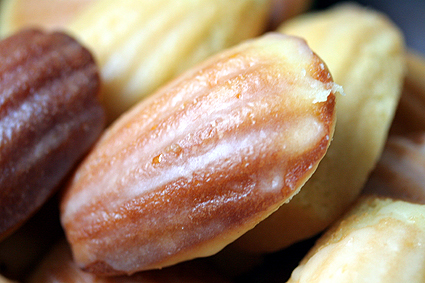 —
3 large eggs, at room temperature
—
3 large eggs, at room temperature